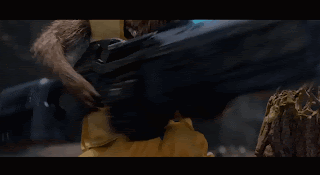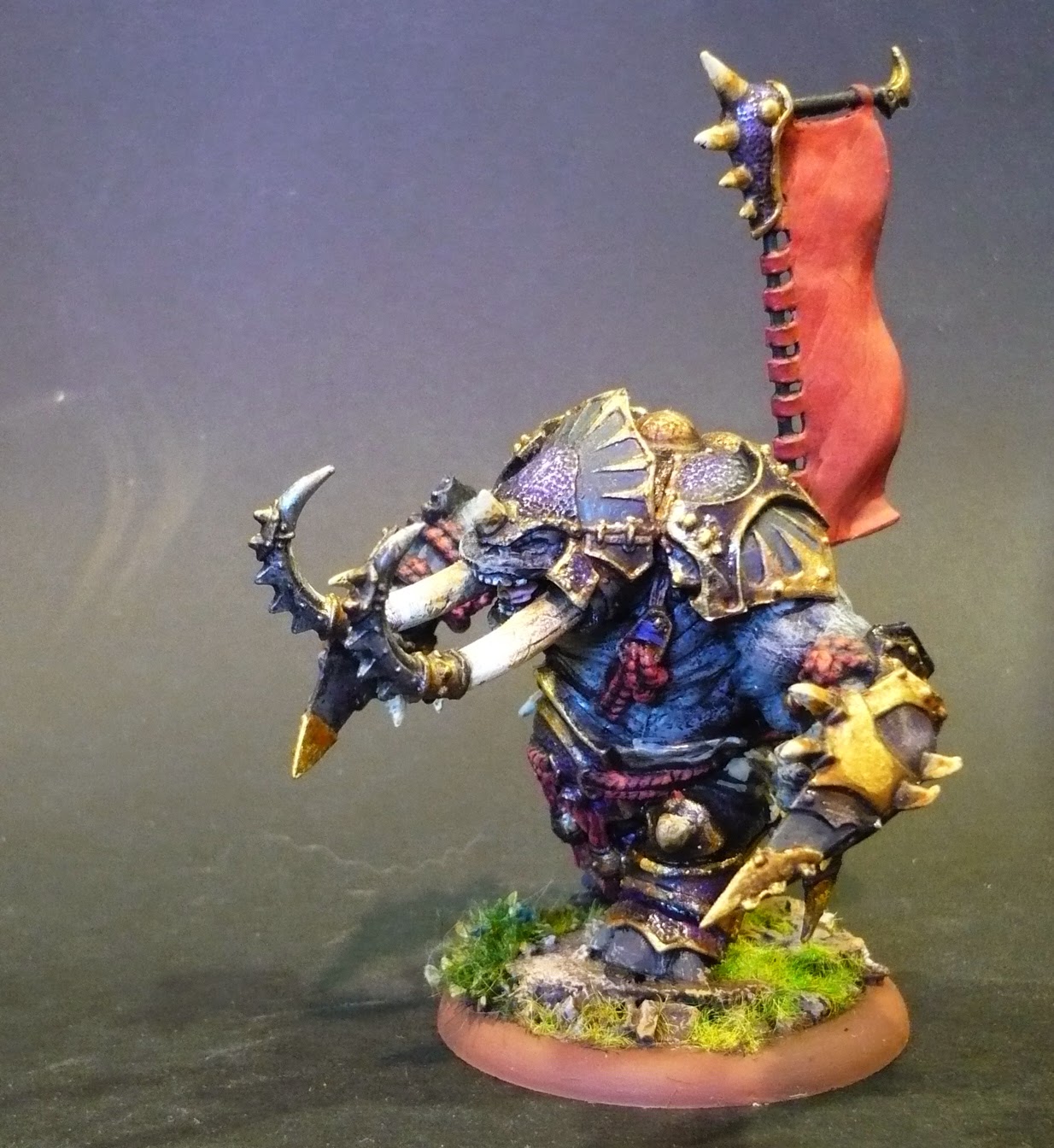[This was my second entry for the Fifth Annual Analogue Hobbies Painting Challenge, reposted here for folks not following that blog.]
Continuing in a skirmish vein from my last entry, here's a samurai (or bushi) war band (or buntai as the game calls it) for Ronin, Osprey's samurai skirmish game.
Continuing in a skirmish vein from my last entry, here's a samurai (or bushi) war band (or buntai as the game calls it) for Ronin, Osprey's samurai skirmish game.
This was my first time painting 28mm samurai (I've done 10mm samurai in the past) and I'm now firmly convinced that this particular genre compares very closely to Napoleonics in terms of fiddly painting detail and potential for eye-catching, colorful "uniforms." On the one hand, I love how everything turned out; on the other, I can't begin to imagine painting a whole army of these guys! Lots of detailed brushwork was called for.
I have another buntai in the painting queue, a band of Ikko-Ikki - fanatical peasants out to destroy the system. Rather than painting up a bunch of generic samurai and peasants, and being unable to resist my history-geek tendencies, I've placed both forces in a historical context: the Ikko-Ikki uprising in Mikawa Province during the autumn of 1563 that culminated in the Battle of Azukizaka in January of the following year. That battle was one of the first victories of a young lord named Matsudaira Motoyasu - later known as Tokugawa Ieyasu, unifier of Japan.
The buntai I've assembled here is modeled around the spark that caused the uprising: "Fighting broke out in 1563 when Suganuma Sada, a Matsudaira retainer, entered the Jōgū-ji temple in Okazaki, and confiscated its rice to feed his own men."
Unlike Napoleonics, there is a fair bit of room to get creative with choosing colors and so forth, especially for minor figures like Sada. His outfit is a riot of colors, but I think they hang together nicely. It helps when you have an excellent figure to work with, as with this Kingsford figure.
Although I'm usually averse to doing elaborate, diorama-style basing, I couldn't resist throwing in a Perry casualty figure as I had some extra real estate on the base. (I painted the casualty with a Takeda clan mon, as they were also early foes of the future Tokugawa.) The mon on Sada's back is a decal transfer from Veni Vidi Vici and was, mercifully, quite easy to work with.
I hit the "lacquered" bits of armor with some gloss varnish to provide a bit of a shine.
As was often the case, different temples in the region aligned themselves with either the Ikko-Ikki or the local lord. Here is a warrior-monk (sohei) ally of Matsudaira's from the temple of Daiju-ji.
That blade means business!
For the ashigaru (infantrymen), I mostly pulled from the Ronin starter set put out by Artizan, but I supplemented with an excellent banner bearer from Perry Miniatures. The banner pattern is based on one used by Tokugawa over the course of his career.
For the sashimono (back banners) of the infantry, I wanted to put on the Matsudaira family crest, but it's so intricate I knew there was no way I'd be able to free-hand it like I did the Takeda mon. I was unable to find an easily-acquired set of Tokugawa transfers, so I set out to make my own with some decal paper.
The experiment was mostly a success. The ink ran slightly when I sprayed the fixative, giving the crest a slight reddish outline...but I kind of like how it turned out, actually. Chalk this one up to "happy accidents."
The long holiday weekend promises some excellent painting opportunities, so hopefully I'll be back next week with the Ikko-Ikki!













































.JPG)









